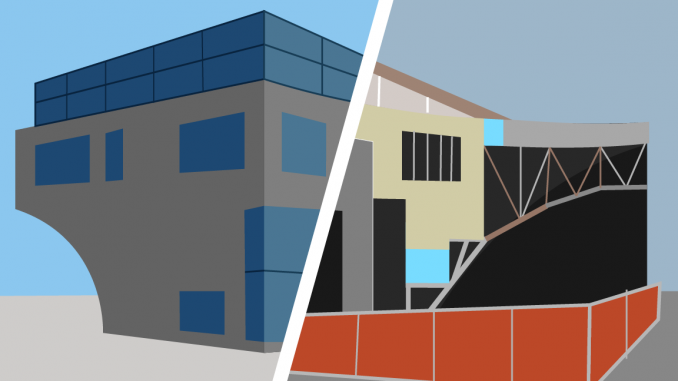

As a first-year student at Temple, I was obviously nervous before my arrival. Having to navigate an entirely new place is intimidating. So, getting an email before my arrival already reminding me that I needed to take an alternative route to my classes increased that stress tenfold.
I didn’t even know where the main entrances to most buildings are, let alone its alternative entrances. It’s difficult as a new student to navigate campus for the first time when major buildings and walkways are under construction, and it is imperative for the university to dial back on these frequent construction projects.
Charles Library is now open after four years of construction and the temporary closure of Liacouras Walk.
“As for functionality, I don’t see the purpose [of Charles Library], but I get it,” said Emily Hipp, a senior theater major. “It’s a new building on campus, but from a graduating senior’s perspective, I don’t think it was really necessary.”
But with the ending of one project comes the beginning of another. Now, the strip of Polett Walk between Anderson and Gladfelter Halls is closed for a year-long construction project of a terrace at the College of Liberal Arts.
New construction projects are improving campus spaces at an aesthetic value, but this construction is more trouble than it’s worth.
This makes it difficult to navigate campus, with different side entrances and pathways just to get to and from Anderson and Gladfelter classrooms.
“We need to change some of our building and bring them up to current standards,” said Dozie Ibeh, associate vice president of Project Delivery Group, which is responsible for campus planning, design and construction. “We recognize that there is an impact there and we try to do whatever is possible to mitigate that.”
“It’s a short-term investment that we are making for the long-term growth and sustainability of the university,” Ibeh added.
While I understand that construction is necessary, student mobility outweighs that need.
Construction projects should be beneficial to students but with long timelines, it’s unlikely that some students who are paying for the project with their tuition will ever get to enjoy it. The class of 2020 will graduate before CLA construction ends next fall. Their year of decreased mobility around campus will be for nothing since they can’t enjoy the project once it’s here.
Although this construction eventually provides spaces for students to study and socialize, these construction projects are tedious and divert funds away from projects that could be more directly benefiting everyday lives of students.
“I think the assumption is that students like aesthetics but do we know if that is what students need and want?” said Joseph Paris, an assistant professor of instruction at the College of Education’s department of policy, organizational and leadership studies.
“I hope that institutions like Temple will do an analysis to determine [that] if we invest our finite resources here, it will have more of an impact in terms of a future generation of revenue that we can reinvest back into things like student support, mental health, counseling and student wellness,” Paris added.
If more funds went to bolstering existing programs that affect students directly, more students would be getting the benefits of university resources, rather than the hindrances that come with lengthy projects.
Some better options for resource allocation on campus would be to improve Tuttleman Counseling services, develop new academic programs and provide more resources for students of color and LGBTQ+ students.
Instead of having both new and returning students relearn how to navigate campus every few years, we can concentrate on programs that will have a positive impact on student life from its implementation.



Board member Patrick O’Connor is probably behind all the construction. He insists that raising tuition is an unavoidable necessity, but then all the extra revenue goes towards unnecessary building projects like this. Sure, having fancy buildings and all is nice, but who honestly cares when it’s only sending the average student more into debt?
You poor little snowflake. Welcome to life with detours. Cutting edge research and scholarship requires investments in facilities. The demand comes from faculty and students alike. Sorry for your inconvenience, but you are not the center of the universe.
A first year student didn’t have the wherewithal to go to the buildings where, I’m assuming, they/their/them had classes prior to the first day of class and then complains that they didn’t know how to get around efficiently. Take some responsibility.
And you’re enjoying the benefits of previous years building and growth, paid for with someone else’es tax money. How does someone lack such foresight?
This is so true. Thank you for raising this issue.
This is funny. My real comment that was critical of this article was never posted. And no one has responded to my question why. But they post my fake comment because it agrees with the author’s narrative.